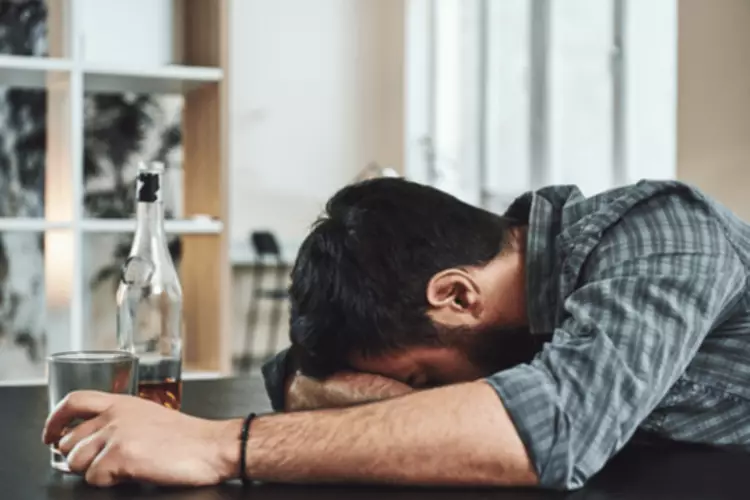Sobriety Strategies: 13 Tips for Staying Sober

Your health and wellness is unique to you, and the products and services we review may not be right for your circumstances. Level IV employs an organizational hierarchy of credentialed staff and adds on clinical and administrative supervision. Level IV services include in-house clinical services and programming and life skill development. Level IV recovery homes tend to have a more institutional building framework. Level III homes employ administrative staffers, such as a facility manager and certified staff of case managers, and maintain an organizational hierarchy.
- Sober living homes are meant to be safe, supportive environments that emphasize the importance of building a community and camaraderie with others.
- Cozy shared bedrooms offer residents a quiet place to reflect, recharge, and reinvigorate after a long day.
- The services and facilities provided by Avenues NYC (collectively, “Services”) do not include, comprise or involve any form of medical advice, oversight, diagnosis, care or treatment.
- These homes can offer an in-between option for individuals after they complete a treatment program and before they return to their homes and lives.
Stay Cool and Calm
After World War II, groups like Alcoholics Anonymous (AA) began to develop across the country. These organizations created 12-step houses that offered an alcohol or drug-free living space while also encouraging attendance at AA meetings. https://ecosoberhouse.com/ homes are not just about providing a roof over your head; they foster a sense of belonging and mutual support. Here, you’ll find individuals at various stages of their recovery, each contributing to a collective reservoir of hope, strength, and encouragement. This network is pivotal in reducing feelings of isolation, often a trigger for relapse.
The Role of Sober Living Homes in Recovery

For more information about Avenues NYC’s in-house recovery services, please visit our recovery services menu. Avenues NYC encourages healthy lifestyle choices, so when it’s time to eat, the large community kitchen is fully stocked with healthy, wholesome snacks available to all community members. Dinners are professionally prepared each night, with a delicious ever-changing menu of chef-crafted dishes catered to each client’s nutritional needs, made from healthy, locally sourced ingredients. These skills ensure that once you transition to independent living, you’re equipped not just to survive but thrive.
Sober Living Houses
So, it’s extra helpful to have a support network available to you when you need it. A therapist can help you learn new coping skills, develop new thinking patterns, and address any co-occurring mental health conditions that may make recovery more difficult. Now that you are sober, you may have discovered that some of your past relationships were not only unhealthy but downright toxic. It’s not just your drinking buddies and drug dealers who can get you into trouble—sometimes those who are closest to you can contribute to a relapse. Residents are often required to seek employment, further their education, or engage in volunteer work.
Should You Go to a Sober Living House?

As such, Sober Living houses serve as a space to transition into a life without addiction, developing tools and community while getting used to the demands of daily life. Embarking on the journey to sobriety isn’t a solo trek; it’s a path best navigated with support and structure. That’s where sober living homes come into play, offering a bridge between an intensive treatment program and the realities of the outside world. These homes are more than just a place to stay; they’re a community focused on recovery and rebuilding lives. Sober living homes act as a bridge between the highly structured environment of inpatient rehab facilities and the numerous challenges of returning to everyday life. They provide a safe and supportive setting where you can develop life skills and coping mechanisms essential for long-term sobriety.
Is There a Difference Between Sober Living and Halfway Houses?
Halfway houses traditionally serve individuals recently released from incarceration, acting as a halfway point between prison and their own residence. A stay at a halfway house may be court mandated, but standard SLH residency is entirely up to the individual. They will be able to discuss the best available options and can help locate nearby locations. You can also visit the websites of sober living homes in your area to find one that suits your needs.
- Once you’ve established your footing in a sober living home, transitioning to the outside world becomes the next crucial step.
- By providing separate homes, facilitators can provide gender-specific care to improve the chances of success.
- While some may be hungry to integrate back into society after a stint in a treatment program, there is an expectation that you will remain an active participant in the home and follow its rules.
Read on to learn more about sober living houses, including how they function, whether one may be right for you or a loved one and how to find a reputable facility in your area. Consider asking folks at a recovery meeting or touching base with any sober friends you may have. If you recently completed a treatment program, contact the staff there for referrals to local sober living homes. While sober living houses have research touting their efficacy, it is also important to remember that they are still environments where you are living with others and the focus is on staying sober. Halfway houses, also known as sober re-entry programs, tend to be more structured. Other times, they function as a more intensive residential facility, meaning that there is consistent recovery programming, requirements, and staff present in the house.
Sober Living Houses vs. Halfway Houses
This aspect of sober living ensures that you not only work on staying sober but also on rebuilding your life and securing a stable future. Sober living homes in the U.S. aren’t covered by insurance and are often paid for out of pocket. Payment plans, scholarships, grants and government-funded programs may be available for residents facing financial hardship. Organizations that offer SLH scholarships include CLEAN Cause Foundation and Ben Meyer Recovery Foundation, per Dr. Kennedy and Clark. People can experience specific challenges in recovery depending on their gender.

Who Lives in Sober Living Homes?
Financial troubles and problems finding and keeping employment are major triggers for relapse, but it is possible to take baby steps and get your finances in order. You may also need to change your route to work or home in order to avoid any triggers, or people, places, or things that make you want to use drugs or drink again. Strict enforcement of these rules ensures a stable environment where you can focus on your recovery without external pressures or temptations. Residential rehab offers you or your loved one the opportunity to start anew in a setting tailored to your needs. You can also look into Oxford Houses, which provide all recovering users the opportunity to develop comfortable sobriety without relapse.

Được đóng lại.